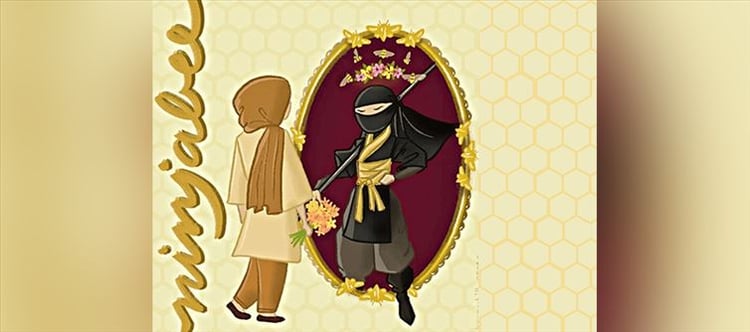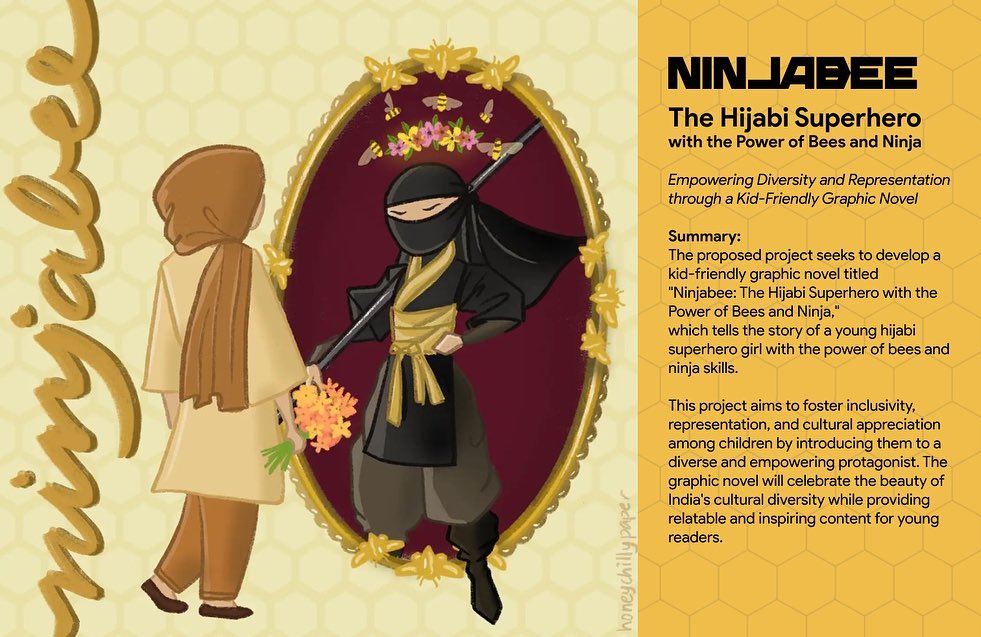Pushpa Telugu Movie Review, Rating
పుష్ప తెలుగు సినిమా రివ్యూ ,రేటింగ్
-
Vishal Hints - Political Entry?
-
'Down with Israel' slogans raised in Iranian Parliament?
-
If there is a war between Iran and Israel, who will win?
-
UN Chief warned Israel against retaliatory action
-
Is Pakistan going to get relief or problems increase?
-
What will be the impact of Iran-Israel tension on India?
-
What has been the history of Iran-Israel relations
-
Will history repeat itself? Unity of the country is paramount
-
Know these warnings of Babasaheb Ambedkar, need to read
-
Why were bullets fired at Salman's house? Reasons came to light
-
Where are Iran's nuclear bases? let’s know
-
Kannada film producer Soundarya Jagdish commits suicide
-
Does Iran have enough uranium to make 12 nuclear bombs?
-
Iran-Israel Tension: Will Israel destroy Iran's nuclear bases?
-
The world must stop the war to be a better step toward peace
-
If Iran does not stop attacking then a third world war begin.
-
Social Responsibility with Natural Disaster
-
Drought prevails in the courtyard, the water crisis in Bihar
-
No prohibition, but take care of feelings
-
Mutton in Sawan: Politics of food and subtle message of PM
-
Tejashwi gave a chance..on-camera catering
-
East Champaran: Walk over or tough fight!
-
Bin Shahabuddin, Shahab is so powerful
-
NDA's problems will increaselet’s understand
-
Trouble on three seats of Bihar, INDIA alliance worried?
-
BJP candidate Geeta Koda attacked during campaign
-
Ram Navami puja timings-celebration of Rama's birth!!!
-
Competition between these candidates of BJP-AAP and Congress
-
RJD candidate Rohini Acharya's target on BJP manifesto
-
'Inflation, GST and unemployment...', said JP Aggarwal.
-
Sanjay Singh's counterattack - 'Reservation will end'
-
BJP's 'Mission 50' in UP, Sunil Bansal himself took command
-
This big fan seen with CM Yogi, shared the stage together!!!
-
Importance of World Hemophilia Day...
-
As elections approach, BJP suffered a big loss in the survey!
-
Karnataka BJP leader suggested to the women minister
-
When will the elections be held in Assam?
-
World Hemophilia Day History and Theme...
-
What will happen in Assam and North East, revealed in the latest survey?
-
Why is it important for political parties to pay attention to this
-
What is the reason for the water shortage in Bengaluru?
-
The problem affects 35 crore people-issue are missing from elections
-
When was the first law for tax introduced in India
-
In ancient India, people were given tax exemption
-
Rohit Meets Agarkar; Hardik Pandya's Selection In India's T20 WC Squad Depends On...
-
Mahesh Bhupathi, Heartbroken By RCB's 6th Defeat In 7 Matches, Asks BCCI To 'Enforce Sale' Of Franchise
-
Bhool Bhulaiya 3: The team is aiming to shoot for this special dance number next month👻 .
-
Top 3 Player Battles To Watch In Kolkata Knight Riders vs Rajasthan Royals IPL Match
-
The Cameo of this late hero will be seen in Vijay's film 'The Greatest of All Time'
-
Pawan's Shocking Volunteer Claims!
-
Richa took inspiration from this character of Meena Kumari for 'Hiramandi'
-
Urvashi Rautela Shares Photo With NTR Jr, Netizens Troll Her For Making Him Unrecognisable With Filters
-
Anushka Sharma is back in India with Vamika and Akaay
-
Secunderabad: BJP's Hat-Trick Hope?
-
Ethnic To Western: A Look At Raashii Khanna As She Stuns In Every Outfit
-
Mouni Roy Drops Cryptic Note About People Having 'Million' Layers
-
Two Accused Arrested For Firing Outside Actor’s Mumbai Residence !!!
-
Ranveer's high-energy lungi dance at Shankar's daughter's wedding!!
-
Zaheerabad's Race - Heats Up.?
-
Kapil Sharma Visits Vaishno Devi Temple With Wife Ginni And Kids !!!
-
Ishwak's career shines due to the praise he is getting for 'Berlin'
-
The actress is upset with the speculations regarding expanding her family.
-
Akshay Kumar to make Telugu cinema debut with ‘Kannappa’
-
Zeenat Aman Reacts To Mumtaz's Comment On Her Marriage !!!
-
Carnatic musician and music director K G Jayan passed away...
-
Diljit Dosanjh, Parineeti Chopra give a shoutout to Amul doodle of ‘Chamkila’
-
Vikas Divyakirti stated that a film like 'Animal' takes our society back by 10 years.
-
Boney Kapoor Recalls Living In Raj Kapoor's Servant Quarters After His Father Was 'Thrown Out' Of Jobs
-
Aamir Khan files FIR with Mumbai Police against fake Congress advertisement
-
Samsung One UI 6.1 Now Rolling Out With Galaxy AI Features For These Phones And Tablets
-
JD Majethia was cheated by online fraudsters??!
-
Realme P1 5G Series, Realme T110 Earbuds India Launch Today !!!
-
AR Rahman: Imtiaz Ali has reinvented himself with Amar Singh Chamkila!!
-
OnePlus 11 Gets Another Price Cut In India. Check Out The New Price And More
-
Apple Sees Decline In Shipments As Samsung Reclaims Throne. Here's How Top 5 Brands Fared
-
Accused Fired Outside Salman Khan's House In Bid To Kill Him
-
Major Layoffs In 2024: Tesla, Apple, McKinsey, Google, Amazon And Many More
-
Vidya Balan shared her views on 'Animal'
-
KBC 16: Amitabh Bachchan is all set to return to the 'hot seat' !!!!
-
This is the biggest mistake made by Jagan..!?
-
The director of 'Gadar 2' became a fan of Pushpa 2!!
-
Amitabh Bachchan amazed with AI, drops video made from his still photo
-
Rates in betting board seats are changing..!?
-
Is Rana Daggubati playing villain in Rajinikanth's Vettaiyan?
-
Balayya, Lokesh, Babu &Jagan: Interesting Betting..!!
-
Varla Vs Kayla: Who will win in Pamarru?
-
YCP leader sentenced to 18 months in jail... What happened?
-
Big relief for Janasena..!? High Court dismissed the petition..!?
-
Will Song Sentiment work for Jagan...?
-
18 months imprisonment for Thota Trimurthulu..!?
-
Another tragedy... Senior actor Dwarakish passed away...
-
Heat Waves & high-temperature warning in Andhra..!?
-
AP Elections 2024: Who is in power this time in AP..!?
-
Vijay's wife Sangeeta attended the wedding ceremony..!?
-
RCB has to win 7 consecutive matches to enter the playoffs..!?
-
Kodali Nani is keen to win this time..!?
-
Jagan's Attack - Stone or Tile?
-
Former CM Returns - Which party will he join.?
-
Machilipatnam's Showdown: Doctor's Debut.!
-
"I'm Not a Terrorist" - Kejriwal's Last Message from Tihar Jail
-
SC Revokes Baba Ramdev - "You're NOT Innocent"
-
Loan Waivers: Fake Promise?
-
Gurjala - Shocking Election Clash.?
-
Mismatched Candidate in Anakapalle?
-
Bandaru's Future - Big Question Mark.?
-
Keerthy Suresh Radiates Glam in a Yellow Sharara - Photos
-
Malavika Mohanan Flaunts her Toned Figure - See Photos
-
25 Hot Thundering Thighs Photos of Pooja Hegde in a Ruffled Body Gown
-
HOT! Samantha Sweating in Gym and Gives a Spicy Treat!
-
Bandaru's Seat Snub: TDP Fallout?
-
Samantha Comes to Rescue Pujara
-
Telangana Hyderabad - Youth Succumbing to Road Accidents Raise Concerns
-
AP - Will there be a New Joint Manifesto?
-
AP Stone Politics - Is TDP under one roof?
-
AP - Modi and Amit Shah Taking AP too Easy?
-
Shocking Secrets Revealed by Prashant Kishor?
-
AP: YS Avinash Reddy's future still unclear?
-
Jagan's Non-Kamma - Backfire.?
-
TDP Party's Troubles Deepen?
-
Jagan Attack: Evidence Still Elusive?
-
AP- Manifesto Promises Revealed.?
-
Telangana - National highway turns paddy drying platform in Karimnagar
-
AP - What are the Real Facts behind the Surveys?
-
Telangana Hyderabad - Intense heat returns as temperature crosses 40°C
-
In India, people curse the government every year..?
-
Telangana Hyderabad - Wine Shops and Bars Closed Tomorrow
-
How effective are issues like employment and reservation?
-
What promise did the Samajwadi Party (SP) make?
-
Why has India Alliance given priority to only these issues?
-
Telangana Hyderabad - RTC cuts down buses between 12 noon and 4 pm due to heat
-
Why are people not getting employment?
-
Rayalaseema : Internal Conflicts in TDP ?
-
Center spent crores, yet why are 83% of youth unemployed?
-
Iran said - notice was given 72 hours ago, America refused
-
G-7 countries threatened Iran, said- now we are ready.
-
America's big statement on war, will Biden attack Iran
-
Sarabjit Singh's killer was shot dead by unknown assailants
-
There will be shocking results, claims Ashok Gehlot
-
Before the elections in Rajasthan, BJP's clan expanded
-
'BJP's resolution letter is PM's guarantee'-Shekhawat statement..?
-
What happened so far in the firing case outside Salman's house?
-
Salman Khan's Mumbai house firing-CCTV footage
-
Big update on the firing case at Salman Khan's house...
-
Aditya Thackeray's attack on NDA
-
Former CM Charanjit's reaction on getting Congress ticket
-
Congress can get 30 percent votes, condition of AAP and BJP
-
AP - Wives who have Started Canvassing for their Husbands
-
VHP leader shot dead in Nangal,-' Will have to face consequences'
-
Telangana Hyderabad - Land sharks lying in wait to gobble up God’s lands
-
Telangana - Will gold rates in Hyderabad cross Rs 80 thousand?
-
Telangana - CM Promises to Waive Farm Loans by Aug 15
-
Jagan's Insult Provokes Chiranjeevi Back into Politics
-
Srikakulam - TDP Regaining the Lost Throne!
-
BJP Supporting Jagan? Sunitha Suspects
-
Telangana - Revanth Reddy Govt Took Less Loans than KCR's
-
YS Sunitha's Slap-Like Answer to Sakshi Reporter
-
A Big Blunder from CBN and Pawan Kalyan!
-
Tollywood Keeps a Muted Response on Jagan's Incident
Empowering 140+ Indians within and abroad with entertainment, infotainment, credible, independent, issue based journalism oriented latest updates on politics, movies.
India Herald Group of Publishers P LIMITED is MediaTech division of prestigious Kotii Group of Technological Ventures R&D P LIMITED, Which is core purposed to be empowering 760+ crore people across 230+ countries of this wonderful world.
India Herald Group of Publishers P LIMITED is New Generation Online Media Group, which brings wealthy knowledge of information from PRINT media and Candid yet Fluid presentation from electronic media together into digital media space for our users.
With the help of dedicated journalists team of about 450+ years experience; India Herald Group of Publishers Private LIMITED is the first and only true digital online publishing media groups to have such a dedicated team. Dream of empowering over 1300 million Indians across the world to stay connected with their mother land [from Web, Phone, Tablet and other Smart devices] multiplies India Herald Group of Publishers Private LIMITED team energy to bring the best into all our media initiatives such as https://www.indiaherald.com

 His character NinjaBee, a hijab-clad ninja with superpowers, is an effort to highlight the diversity in the nation. The planned graphic novel, NinjaBee, honours Muslim women and is based on Hyderabad's Deccan cultural history. The new media artist is familiar with the art scene in Hyderabad. At the Utopian Dystopia exhibition in kochi last year, one of his earlier creations, a new media geometric art piece titled The Royal house of Mourning, was on display.
His character NinjaBee, a hijab-clad ninja with superpowers, is an effort to highlight the diversity in the nation. The planned graphic novel, NinjaBee, honours Muslim women and is based on Hyderabad's Deccan cultural history. The new media artist is familiar with the art scene in Hyderabad. At the Utopian Dystopia exhibition in kochi last year, one of his earlier creations, a new media geometric art piece titled The Royal house of Mourning, was on display. 



